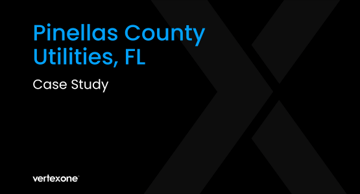Crisis communications planning is an important part of any utility provider’s operations. Power outages, water shortages, severe weather, and more can lead to disaster if you’re not prepared to respond quickly and efficiently.
Extreme, unpredictable weather conditions—such as the Texas freeze of February 2021, continuous blackouts in California, or power outages following Hurricane Ian in Florida—require immediate action.
Crisis communications planning helps a utility provider meet any incident head-on with a solid strategy for communication throughout each stage of the incident. Meanwhile, a contingency plan helps utilities prepare their practical response to manage a crisis before it occurs.
Crisis communication strategy and contingency planning involve developing strategies for dealing with crises such as:
- Power outages.
- Water quality issues or contamination.
- Grid overload.
- Rolling blackouts.
- Water leaks or main breaks due to outdated, ineffective water facility infrastructure.
A crisis communications plan may be part of a utility’s crisis strategy, but it should have its own distinct protocols. These regulations should be written clearly and updated frequently so the plan can be activated immediately after a crisis occurs.
Why do utilities need a crisis communications plan?
In a post-pandemic world, digital communication when it matters most is key. The silent utility is a thing of the past, and consumers expect to hear from their energy providers regularly in times of crisis.
Why? Customer expectations and demand have evolved dramatically. Also known as the Amazon experience, consumers want frequent, frictionless, innovative interactions with their utility providers during incidents, from billing alerts to power outage notifications and grid overload advisories.
What does your utility’s crisis communications plan need?
A crisis communication plan works with a utility’s contingency plan to prepare for possible emergencies and manage them when they happen.
Here are a few steps to get started:
1. Determine what types of emergencies your utility typically handles.
Crisis communications are all about preparation. This means determining the types of emergencies your utility may encounter, from power outages to grid overload to water main breaks. Using data, customer service reports, and analytics, aim for a thorough understanding of the scope of incidents that could occur and how each department of your utility would respond to the threat in real time.
2. Focus on prevention.
How can utilities work to identify issues as soon as possible? The right technology can help.
Automatic or smart meters can detect problems before they cause significant damage. Minor leaks, unusually high customer usage, or potential grid overload can do less damage when detected immediately. Intelligent automation using the right analytics platform can also help energy providers better understand consumption information and improve leak detection processes. This enables them to resolve issues quickly, leading to higher customer satisfaction and better customer service processes.
Additionally, self-service functions—such as personalized communication delivered via text, email, or app notification—can lead to actionable insights that customers can carry out themselves to respond to or prevent issues.
3. Prioritize effective communication in real time.
There are many innovative solutions available to energy providers. For water utilities, automated leak detection through advanced metering infrastructure (AMI) can detect low water pressure and leaks systemwide to help utilities understand where to shut off valves.
In February 2021, extremely cold weather in Texas wreaked havoc on water infrastructure across the state.. However, the city of Jacksonville, Texas, had already implemented smart meters that allowed customers to manage their water usage and report issues. These meters allowed customers to contact their utility as soon as leaks occurred, and their utilities could remotely shut off valves in specific locations.
In Austin, Texas, a group messenger system that provided real-time, multi-channel customer engagement was used in February this year to issue a citywide boil-water notice to half a million people. This proactive solution followed local compliance and likely mitigated some customer frustration.
4. Focus on outcomes.
When developing your crisis communications plan, ensure you have an idea of the goals you ultimately hope to achieve. Here are a few guideposts to keep in mind:
- Will your plan reduce incoming calls to your support center?
- Does your plan prioritize reaching more households quickly when emergencies happen?
- Can your strategy drive digital conversion to your website or mobile app?
- Does your plan streamline processes, simplifying the lives of your customers and employees?
The right CIS can boost your crisis communications plan.
Are you interested in implementing an effective meter-to-cash process with your customer information system (CIS)?
Click here to download How Your Utility Tech Stack Can Power an Industry-Leading Meter-to-Cash Process, in which you’ll learn:
- The key aspects of your CIS ecosystem.
- How to build a roadmap for a future-proofed CIS.
- The pros and cons of building versus buying the right CIS.
- How new customer expectations have changed the role of a CIS.





